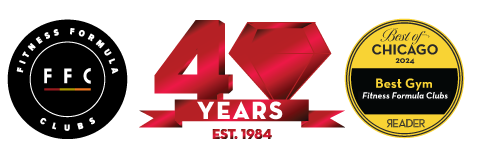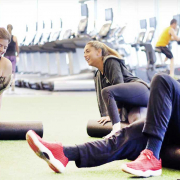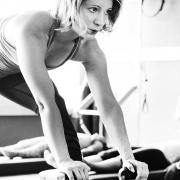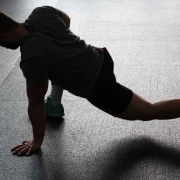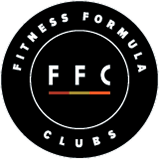Sports Fitness Training: Ballistic Training & Plyometrics to Bridge the Gap Between the Gym & Court
Is your golf swing not as strong as you would like it – or is your forehand in tennis more like a fore finger? Do you have trouble accelerating or jumping in your basketball games? Ballistic training and plyometrics may be your answer. (And they might be the most underrated and under-represented exercise mode in the gym today).
Ballistic Training vs Plyometrics
Ballistic training is described by throwing or jumping with weight, which maximizes acceleration of the weight, with little or no deceleration of the muscles. (2) Plyometrics is defined as the discipline of performing maximal effort, burst-based movements that use the stretch/shortening cycle of the muscles to produce a powerful result (e.g. repeated box jumps). It was first used by Soviet Olympians in the 70s and is used today with college/professional athletes as a form of sports fitness training. (1)
An In-Depth Look at Ballistic Training
In traditional weight training, the load has to be decelerated in order to protect the joints and to end the repetition. However, this act teaches the body to slow down during ‘sticking points’ or rather, the hardest parts of a repetition – and these (necessary) points can cause an athlete to plateau.
The National Strength and Conditioning Association’s Basic Guidelines for the Resistance Training of Athletes states that “performing speed repetitions as fast as possible with light weight (i.e. 30-45% of a one-rep max) in exercises in which the bar is held on to and must be decelerated at the end of the joint’s range of motion (e.g., bench press) to protect the joint and does not produce power or speed training, but teaches the body how to decelerate, or slow down. If the load can be released into the air (i.e., the bar be let go at the end of the range of motion) the negative effects are eliminated.” (3)
Why Ballistic Training Works for Fitness:
Basically, as much as 75% of a repetition can be devoted to slowing down the weight – not actually producing power/acceleration. Being able to let go of the weight, ball, or load, is paramount for developing power and strength throughout the entire range of motion for ANY movement. Examples for ballistic movements include medicine ball throws, weighted jumps, and banded movements.
An In-Depth Look at Plyometrics
In the strictest sense, plyometrics are used to teach athletes to jump higher and run faster by using the inherent elasticity in muscles and tendons. An example of this is called a depth-jump. The athlete steps-down from a high box, lands, and immediately jumps onto another box. This causes the athlete to compensate for the force of gravity by absorbing the impact via lengthening the muscles and going into a quarter squat (eccentric motion). Once the energy has been absorbed, the muscles are the same length for the briefest of moments (amortization), then, the athlete contracts the glutes/quads to jump again (concentric motion).
Why Plyometrics Work for Fitness:
By training this stretch-shortening cycle to happen faster, and under higher loads, you can train the nervous system and musculature to jump higher and more quickly. This same principle can be applied to upper body workouts using bands and medicine balls, creating a cycle of stretch shortening that helps create more power and speed.
Benefits of Plyometrics and Ballistics Training
You’re probably thinking, ‘okay, but what does all this sciencey mumbo-jumbo mean?’
In essence, ballistic and plyometric movements force the muscles to produce the greatest amount of force in the shortest amount of time. Muscle fibers are stimulated according to the force/power needed. Low speed/heavy weight moves will use smaller type fibers first, then larger and larger fibers until the load is lifted. However, with plyometrics and ballistic training, the largest are recruited first to make the lift/action as quickly and efficiently as possible.
The more you practice these explosive movements, the better you train your muscles to act as efficiently and powerfully as possible.
Related: the benefits of HIIT and why you should give it a try (yay, science!).
This brings us to my preferred type of training – complex/contrast training. In this type of training, slow, near maximal weightlifting motions followed by fast-speed/fast-twitch plyometrics or ballistics training moves has been demonstrated to activate the larger muscle fibers to a greater degree than if you were to complete each type of exercise separately. (4)
By now you might be thinking ‘Okay… but what does that mean in plain English, Matt?’ How does ballistic training/ plyometrics apply to your daily life? Here are the basic benefits of plyometrics and ballistic training for improved performance:
- You will accelerate faster: sprinting by someone on the court, down the field, to the train etc.
- You will jump higher (and it looks cool)!
- You will gain definition and size (not designed for bodybuilding, but it can be adapted).
- You will punch harder and faster, throw a ball harder and farther.
- Develop a stronger, more stable core and flatten the stomach; stabilizing fast moving weight will emphasize stronger abdominals, obliques and spinal erectors.
- Burn more calories from the full body workouts (lean out!) Coordinating multiple joints for an explosive motion at a high intensity is a great conditioning and cardiovascular workout.
- You will have more energy in your everyday life!
- You will conduct everyday movements with more “oomph” and be able to produce power on command! You will fly out of your chair at the end of the work day.
If you are interested in ballistic training or plyometrics, or would like to know more, please contact me at mlamore@ffc.com or via @lamorepower on Instagram!
Post written by FFC West Loop trainer Matt Lamore.
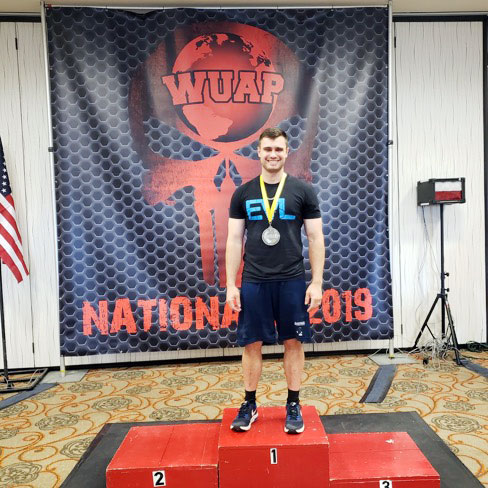
About Matt
Matt Lamore is a certified strength and conditioning specialist and master trainer at FFC West Loop specializing in plyometrics, circuit training and powerlifting. He uses his background in sports performance training to bridge the gap between the gym and daily life. Before FFC, he has trained high school, Division 1, and professional athletes in strength, agility and speed. Matthew received both his B.S. and M.S. in biology from Bucknell University.
Sources:
- (1): (Yuri Verkhoshanski (1967). “Are Depth Jumps Useful?”. Legkaya Atletika (Track and Field). 12: 9.)
- (2): Fleck, Steven J. & Kraemer, William J., ‘Ballistic Training’ in Designing Resistance Training Programmes, Human Kinetics:Leeds, 2013, p.280
- (3) (Elliot, B. and Wilson, G. A biomechanical analysis of the sticking region in the bench press. Medicine and Science in Sports and Exercise. 21: 450-464. 1989).”
- (4) Joyce, David & Lewindon, Daniel & Larson, Rett, ‘Neural Preparation’ in High Performance Training for Sports, Leeds:Human Kinetics, 2014, p.107).

